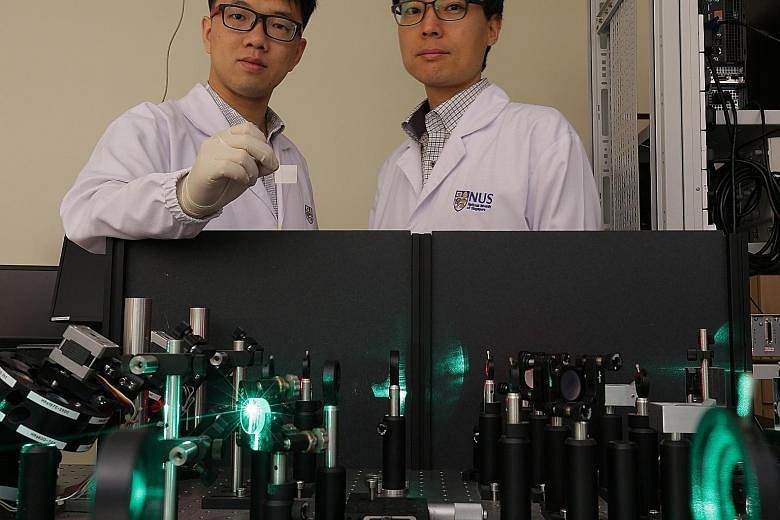In the past two decades, terahertz (THz) technology has caused a buzz among scientists for its potential applications in a wide range of fields, from security screening to medical imaging. However, the development of THz systems has been slowed by the prohibitive cost of producing the waves.
Now, after two years of research, a team from the National University of Singapore (NUS) has broken through this roadblock by inventing a cheap THz wave emitter, which is a key component of any system that uses these super-high frequency waves.
The team, led by Associate Professor Yang Hyunsoo and Dr Wu Yang from the Department of Electrical and Computer Engineering at the NUS Faculty of Engineering and NUS Nanoscience and Nanotechnology Institute, published its findings in the scientific journal, Advanced Materials, last Wednesday.
Researchers from the Agency for Science, Technology and Research's Institute of Materials Research and Engineering - as well as Tongji University in China - also contributed to the invention of the emitter.
Since 2011, the team has received $1.5 million in research funding from NUS and the National Research Foundation for the development of THz systems.
Currently, these systems produce THz waves by shining a laser at photoconductive antennas or crystals, which convert the intense beam of light into THz waves. However, exciting the crystals and antennas requires bulky and powerful lasers, making this method costly and inconvenient.
Prof Yang said the new emitter can be powered by a low-power laser, which will be cheaper to mass produce. His team is looking to develop new THz systems that are more compact and could potentially be 10 times cheaper than current systems, which cost between $250,000 and $300,000. It aims to develop a prototype in one year.
The emitter can be fabricated on flexible surfaces like plastic, allowing it to be harnessed as wearable technology for personal use.
For instance, Prof Yang suggests the new emitter could be part of a wearable sensor that helps soldiers detect chemical agents in the field.
The healthcare and security industries can also benefit from the invention. THz waves can pass through clothes to detect hidden explosives or firearms. They are also non-ionising, which means they are safe for long-term exposure, unlike X-rays.
The team has been contacted by research institutes and local healthcare organisations for collaboration in cornea damage assessment. They are also discussing possible licensing opportunities with various partners in the laser technology industry and the biomedical industry.

